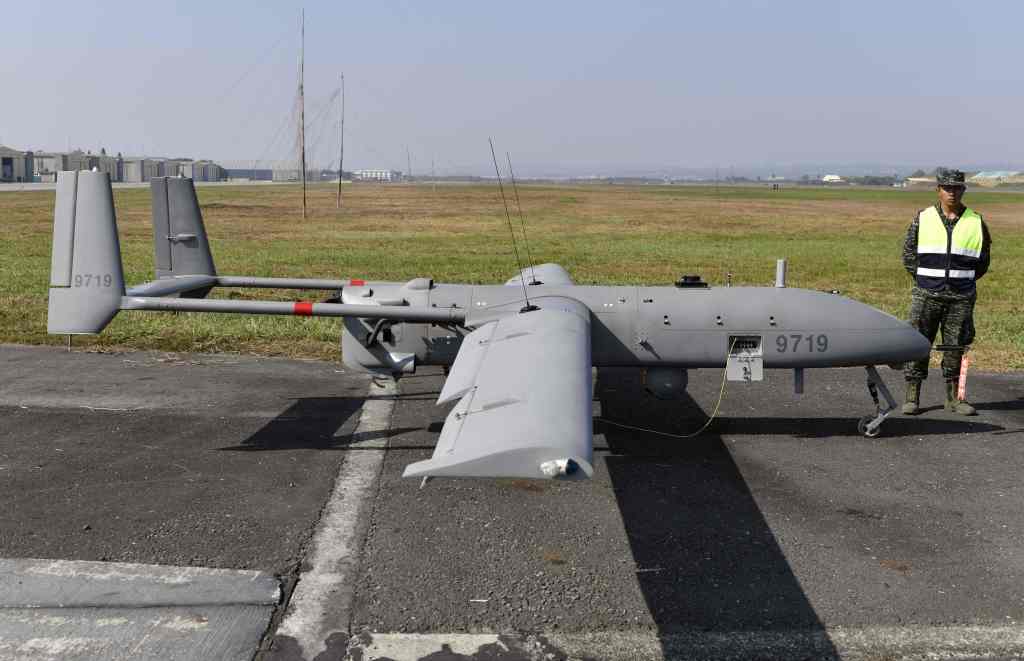By Aaron Gregg | The Washington Post
Swarms of small attack drones that confuse and overwhelm anti-aircraft defenses could soon become an important part of the modern military arsenal, Britain’s defense secretary said, something that would mark a major evolution in robot-enabled warfare.
Speaking at the London-based Royal United Services Institute think tank, British defense secretary Gavin Williamson said Britain will fund the development of “swarm squadrons of network enabled drones capable of confusing and overwhelming enemy air defenses,” noting that such vehicles would complement the British fleet of F-35 Joint Strike Fighters.
He seemed to confirm what some military experts have said for years: The technology to enable synchronized drone swarms is here, and military leaders are starting to embrace the idea of building it into their operations.
Tech companies have demonstrated that they can organize drone swarms for complex light shows and other flashy endeavors. And some widely publicized systems tests in the United States have shown how the military can adapt that concept for its own use.
“This idea that was once science fiction, then heresy, is now out there in the discourse and increasingly accepted,” said Peter Singer, a senior fellow at the New America Foundation who studies the future of warfare.
Williamson initially said those systems would be deployed “by the end of the year,” a target that experts said is unrealistic. The Ministry of Defense later seemed to retract that timeline, telling the trade publication U.K. Defense Journal that the technology actually “will be developed over a 3-year programme.”
Paul Scharre, a senior fellow with the Center for New American Security, said Williamson’s plan would place Britain near the forefront of integrating drone swarms into military operations if officials follow through.
“There’s been a lot of experimentation and some vision documents, but to date the U.S. has not moved out on building a drone capability that could take down air defenses,” Scharre said. “What ends up getting the most funding is human-inhabited aircraft.”
The U.S. military has been exploring different iterations and uses of the drone swarm concept for more than a decade, using research programs bearing names like CICADA, Gremlins and Valkyrie.
Since 2006 the Naval Research Lab has maintained an exploratory research and development program called Close-in Covert Autonomous Disposable Aircraft, or ‘CICADA’ for short. It envisions tiny, disposable aircraft that are meant to be deployed in large numbers to “seed” areas with small electronic sensors, something that could allow military surveillance of dense jungle areas without sending a human pilot into enemy territory.
An experimental program called Gremlins is looking for a way to launch small, jet-powered drones out of the belly of a C-130 cargo plane and recover them later, effectively turning the plane into a flying aircraft carrier.
Some of those efforts are starting to bear fruit.
In a 2016 systems test that the Pentagon called “one of the most significant tests of autonomous systems under development by the Department of Defense,” a swarm of more than a hundred micro-drones dropped out of the belly of F/A Super Hornet fighter jets and flew in tandem, according to a Defense Department news release and video.
Dr. Will Roper, who now serves as assistant Air Force secretary, described that swarm in January 2017 as “a collective organism, sharing one distributed brain for decision-making and adapting to each other like swarms in nature.”
At least one defense contractor is investing in autonomous aircraft that would collaborate with manned fighter jets.
A company called Kratos Defense and Security Solutions produces two classes of jet-powered drones, called the UTAP-22 Mako and the XQ-222 Valkyrie, which executives have said are built for that purpose. The company has received research funding from the Air Force Research Lab and the Pentagon’s Defense Innovation Unit to develop them.
U.S. military leaders have maintained that any weaponry that uses artificial intelligence will have to have humans “in or on the loop,” meaning combat robots could navigate and select targets on their own but would require a human to pull the trigger.
Even so, experts who study the future of warfare say the individual drones within the swarm would have to be partially or fully autonomous, something officials may not be comfortable with.
“The swarm idea inherently drives you towards autonomy,” said Singer, the New America Foundation fellow. “The whole idea of a swarm is not just that it’s a lot of them, but a lot of them working together, sharing information across the swarm.”
While the Air Force has a lot of experience operating remotely-controlled Predator and Reaper drones, employing drone swarms would mean figuring out how a single human could command masses of robots and still have a degree of control over them.
Military scientists are working on solutions to that problem. A DARPA-funded program called Offensive Swarm-enabled Tactics envisions future infantry forces using swarms of more than 250 drones at once to “accomplish diverse missions in complex urban environments.” The agency awarded contracts to Carnegie Mellon, Cornell University, Siemens Corporation and others to help figure out how humans can command and interact with swarms on the battlefield.
For some obvious and not-so-obvious reasons, arms control experts are concerned. Kingston Reif, director for disarmament and threat control policy at the Arms Control Association, said he is worried that drone swarms could increase the risk of a nuclear first strike if they were used to upset missile defenses. There is also a possibility that they could be used to deliver chemical or biological weapons.
“This is an example of another emerging technology that potentially holds great military promise,” Reif said, “but also peril.”










